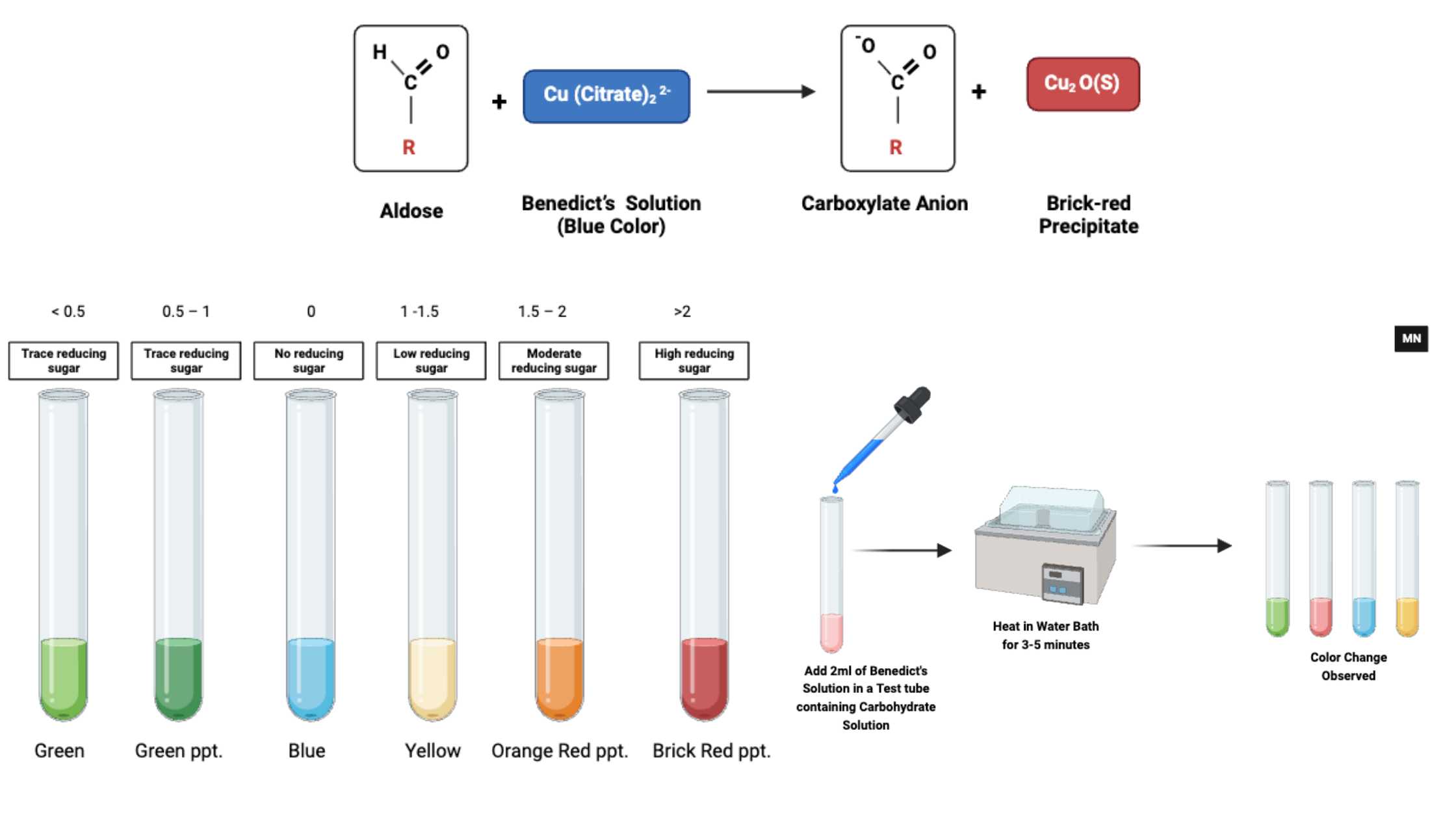Benedict’s Test – Principle, Reagents, Procedure, Result, Limitation
Benedict’s test is a chemical test that is used to test for the presence of reduced sugars within an analytical test. Thus, simple carbohydrates that contain an aldehyde or free ketone functional group are detected using this test. The test is basing itself upon Benedict’s Reagent (also called Benedict’s solution) which is a complex mix of sodium carbonate, sodium citrate, and the pentahydrate of copper(II) Sulfate.
